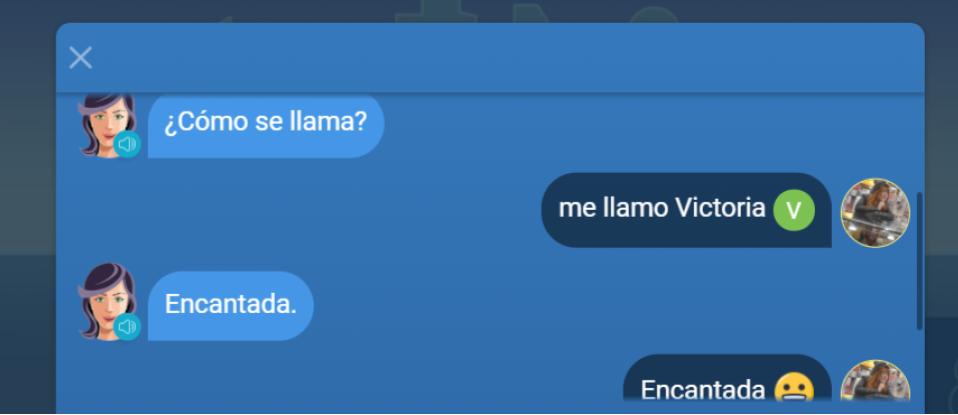Interpretive, Interpersonal, and Presentational Modes of Communication
Class Reflection
Spanish has been a part of my life since it began. My mother, a fluent speaker, tried speaking it to us as much as she could, while my father took me to countries such as Spain and Costa Rica and Mexico in an attempt to teach my sisters and I about the various cultures and opportunities the world had to offer. Even still, my education was not complete without lessons, which were first introduced to me at the age of eight and have continued on to this day (on and off, of course). However, it seemed the more I learned, the further behind I was in my classes.
It makes sense, then, that my limited passion for learning the language was sparked into a fire by my most precious friends- my books. I’m not sure why it didn’t occur to me sooner, but it took encountering foreign libraries in the ninth grade to realize that there was an entire world of stories out there hidden behind a massive language barrier. I had all the fundamentals, but my desperation for new knowledge and experiences was able to convince me to actually apply myself to my studies with all the heart and soul it took to surpass that barrier. From there on out, and from now on, it will be hard work and continued exposure to the language.
Exploring Culture
It goes without saying, but it has been said, many times: My world is one big library. It doesn’t matter what language the stories are written in, so long as they’re available to expand my mind and worldview. However, that’s not entirely correct. Spanish is the language of magical realism. It is the language of fairies just off the page, of the suggestion of magical influence over a particularly beautiful sunset. English is bold and aggressive with themes, while Spanish is a much more romantic language, full of short, simple sentences that hint at something more. Hispanic culture as a whole is more conservative, but not less colorful. It is more rooted in tradition, but not without joy or freedom. It is often mistaken for one thing, but there are a thousand cultures that embrace Spanish, all intertwined.
Engaging in Communities
The importance of language itself is to build relationships with other cultures by surmounting language barriers in order to form a larger community out of all the thousands of smaller ones in the world that are often separated by things exactly like language.
Just travelling to other countries has expanded not only my appreciation for the world community, but my desire to become a functioning member. Included in the job description is a willingness to work hard in order to foster understanding and awareness.
Interpersonal Communication
This class specifically had many aspects of interpersonal communication. Perhaps the most straightforward was the TalkAbroad program, where we engaged in fifteen minute conversations with native spanish speakers from different countries. Another example was discussion board assignments, where we had to post relevant content to a question and then comment on our classmate’s posts.
Out of all of these, I enjoyed flexing my language muscles in the TalkAbroad programs. I think they helped me understand how to talk in another language more efficiently and effectively, and I genuinely enjoyed the conversations. Discussion board posts, on the other hand, didn’t suit my learning style, but more than likely assisted with reading comprehension and allowed a nerve-free situation to express myself in the Spanish language.
Presentational Speaking
There were several opportunities for presentational speaking, but I believe that the one that best covers the extent of what I have learned over the course of this class is a discussion prompt on “mi casa ideal,” or my ideal house.
Not just in this class, but in life, I have always struggled with stage fright when in class. This particular semester was no exception, but familiarity with the subject material and with my audience helped to ease the way a little bit. My favorite presentations, however, are and always will be the ones I am able to record in advance instead of doing on the spot.
Presentational Writing
This class did not consist of much presentational material, which is why I have taken into account my other spanish studies. I use Mondly daily in order to build my vocabulary, and one of the features of such a program is communicating over text with other native speakers in order to build a comprehensive knowledge of the written form of the language.

These conversations have not only expanded my knowledge of Spanish language, but also allowed me to build lasting connections with people from predominantly Spanish-speaking cultures.
Interpretive Listening
The primary examples of interpretive listening during the course of this semester would be the VHL assignments- specifically those with listening aspects. The quizzes and tests also featured quite a bit of interpretive listening that followed the format of VHL.

Initially, my primary struggle was attempting to understand the assignments in the context of a person speaking. But then, once I slowed it down and took my time, I realized that they were just words- words I knew- and when put together, I could figure out the sentences. This was the main leap I made over the course of the semester in terms of listening comprehension and interpretive listening.
Interpretive Reading
Interpretive reading played a major role in the learning process over the course of this semester, although the primary use of interpretive reading was during Cultura assignments on VHL. Other examples are snippets of articles that were in use during tests and exams.
The primary challenge in reading comprehension is the same challenge as listening comprehension: understanding that sentences and paragraphs are just vocabulary and grammar skills put together in context. However, this is a surmountable obstacle when the sentences are broken down and scrutinized for familiar words and phrases.

